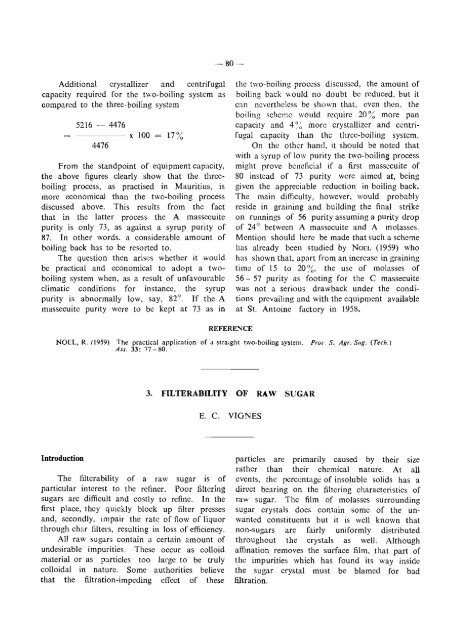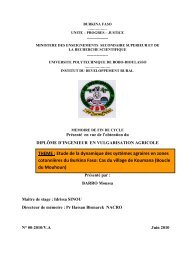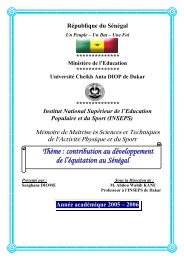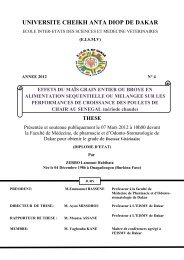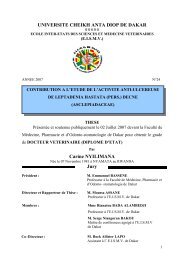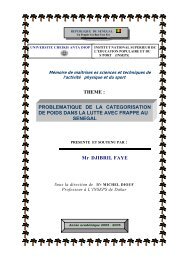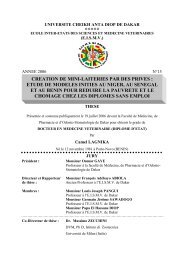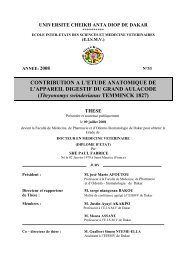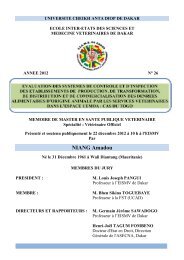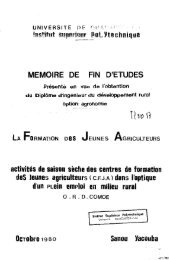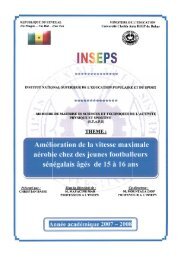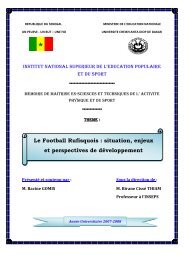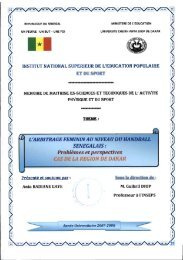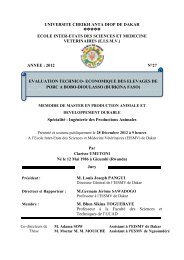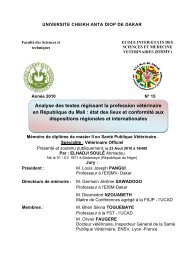- 80--Additional crystallizer and centrifugalcapacity required for the two-boiling system ascompared to the three-boiling system5216 - 44764476x 100 17%From the standpoint of equipment capacity,the above figures clearly show that the threeboilingprocess, as practised in Mauritius, ismore economical than the two-boiling processdiscussed above. This results from the factthat in the latter process the A massecuitepurity is only 73, as against a syrup purity of87. In other words. a considerable amount ofboiling back has to be resorted to.The question then arises whether it wouldbe practical and economical to adopt a twoboilingsystem when, as a result of unfavourableclimatic conditions for instance, the syruppurity is abnormally low, say, 82°. If the Amassecuite purity were to be kept at 73 as inthe two-boiling process discussed, the amount ofboiling back would no doubt be reduced. but itcan nevertheless be shown that, even then. theboiling scheme would require 20 /~ more pancapacity and 4 ~ ~ more crystallizer and centrifugalcapacity than the three-boiling system.On the other hand, it should be noted thatwith a syrup of low purity the two-boiling processmight prove beneficial if a first massecuite of80 instead of 73 purity were aimed at, beinggiven the appreciable reduction in boiling back.The main difficulty, however, would probablyreside in graining and building the final strikeon runnings of 56 purity assuming a purity dropof 24° between A massecuite and A molasses.Mention should here be made that such a schemehas already been studied by NOEL (1959) whohas shown that, apart from an increase in grainingtime of 15 to 20 ~,~, the use of molasses of56 - 57 purity as footing for the C massecuitewas not a serious drawback under the conditionsprevailing and with the equipment availableat St. Antoine factory in 1958.REFERE~CENOEL, R. (1959) The practical application of a straight two-boiling system. Pro r S. Agr. Sug: (Tech.)Ass. 33: 77 - 80.3. FILTERABILITY OF RAW SUGARE. C.VIGNESIntroductionThe filtcrability of a raw sugar is ofparticular interest to the refiner. Poor filteringsugars arc difficult and costly to refine. In thefirst place, they quickly bloek up filter pressesand, secondly, impair the rate of flow of liquorthrough char filters, resulting in loss of efficiency.All raw sugars contain a certain amount ofundesirable impurities. These occur as colloidmaterial or as particles too large to be trulycolloidal in nature. Some authorities believethat the filtration-impeding effect of theseparticles are primarily caused by their sizerather than their chemical nature. AI allevents, the percentage of insoluble solids has adirect bearing on the filtering characteristics ofraw sugar. The film of molasses surroundingsugar crystals does contain some of the unwantedconstituents but it is well known thatnon-sugars are fairly uniformly distributedthroughout the crystals as well. Althoughaffination removes the surface film, that part ofthe impurities which has found its way insidethe sugar crystal must be blamed for badfiltration.
-81-Non-sugars like silica, starch, gums, waxesetc. have all been described at some time orother as the cause of poor filterability. Theproblem has held the attention of sugar technologistsfor a long time but in spite of thelarge amount of research carried out so far,much of it is still not quite understood.The fact that raw sugar manufacturers cannotpredict the behaviour of their sugars underrefinery conditions constitutes a great handicap.Polarisation and ash content do not give anyindication. Very often good polarising sugarswith low ash give extremely troublesome melts.On the other hand, all the usual filterabilitytests arc of doubtful help in evaluating refiningqualities. The more commonly employed test,namely the EJliot test, is empirical and haslittle to recommend it. There is no satisfactoryevidence that it will give reliable and reproducibleresults when applied by different individualsto a variety of raw sugars. Moreover refiners,whether in U.K., U.S.A. or Australia, haveabandoned the method since, from their experience,it is of little value to refiners usinghigh efficiency affination machines and carbonatationplants.Therefore it is becoming increasingly clearthat a test, which will give filterability valuesin the laboratory having a satisfactory correlationwith refinery observations made onMauritius raws, must be found. With this aimin view the method, described by NICHOLSON& HORSLEY (1956), was selected as affordingthe greatest possibilities and investigated accordingly.This test has been claimed as being ofvalue in picking a sugar that is likely to filterbadly in a carbonatation process. Undoubtedlyit has certain obvious advantages over theElliot method; namely, the use of a definiteBrix, a pH close to that prevailing duringrefining and the use of a smaller amount offilter aid. These features simulating moreclosely the actual working conditions, it is notunreasonable to expect more realistic valuesof filterability. In particular, the smalleramount of filter aid is important, as in practiceit has been shown that large quantities tend toobscure differences in the behaviour of sugarsby "swamping" the effect of the impurities.The object of this study was to determinewhat faetor has the greatest influence on filtration.Accordingly, samples of export sugarswere examined for silica, starch, gums, wax andphosphates by well-known methods. The resultswere analysed statistically in an endeavourto determine the degree of correlation existingbetween filterability values and amounts ofspecific impurities. Finally, filterabilities, obtainedby both Elliot and Nicholson methods, werecompared.EXPERIMENTALEquipment.The apparatus has been described byNICHOLSON & HORSLEY (1956). Celite 505was used as filter-aid and calcium acetateethanolamine mixture as buffering agent. Thesyrup was filtered through a Whatrnan No. 54paper under a constant pressure of 50 lbs./sq. in.Filtration rates were reported as percentage ofthe rate for pure sugar syrup. Sufficient syrupwas used to fill the whole body ofthe apparatus.Following is a description of the actual workingconditions.ProcedureA mixture of 330 g. sugar and 220 m!.water is stirred until the sugar is completelydissolved. Brix is then adjusted to 60° using arefractometer and pH to 9.0 with calciumacetate/ethanolamine buffer using a glass electrode.The mixture is stirred for 3 minutes,left standing for 20 minutes, stirred again forone minute and poured into the apparatus.Next, the temperature of the mixture is taken,the head of the apparatus is screwed on andpressure applied. After allowing the filtrate torun to waste for the first 2 minutes, the filtrateflowing for the next 6 minutes is collected in agraduated cylinder, the volume collecting ineach minute interval being noted. Pressure isafterwards released, the head of the apparatusremoved and the temperature of the residualcontents of the filter taken. The rise foundin practice was never higher than 0.5°C.


